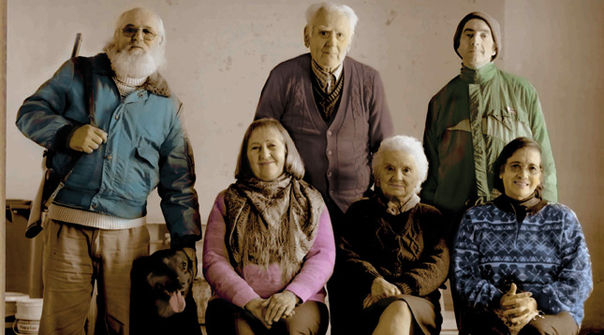Ernestina and the people from the banks
Raciel del Toro of the 2013 Guadalajara Talent Press reviews Martín Benchimol's and Pablo Aparo's documentary LA GENTE DEL RIO.

Martín Benchimol's and Pablo Aparo's LA GENTE DEL RIO.
Ernestina is going to die. Ernestina is going to die because people have left. Ernestina is going to die because the train station has no floor tile and the people from the banks are to blame. Ernestina is going to die because there are no more hotels, no more hairdressers, not even the guard post of the police force that used to control the people from the banks. Ernestina is going to die when the white-haired left are gone.
But before Ernestina dies, Martín Benchimol and Pablo Aparo have footed their first documentary film – LA GENTE DEL RIO – in order to capture the essence of Ernestina, a small rural town in a province in Buenos Aires, leading to a reflection on laziness, seatedness, insecurity and marginalization not as a cause of crime, but as an exclusion of a social participation, leading to a lack of community sense.
The picture of this town and its people is captured in a front setting as in an interview, as if the pictures we get to see were the framed portraits of a family over the chimney or hanging from the walls of memories. The setting selection suggests the same feeling we get when we arrive at grandma's home, peaceful and cozy.
Nevertheless, Ernestina has the same psychosis as other big Latin American cities: insecurity or the idea of insecurity spread by the sensational media.
From this premise, the documentalists keep tension along the story of the characters, who coincide with each other when blaming the people from the banks for the loutish acts. The filmmakers are very assertive regarding the "hidden data". Who are these offenders? Why do they do that? How are people from Ernestina sure that the offenders come from other sides of the region and are not local? Martin and Pablo are not willing to answer these questions; they keep the thriller although they don't look for a shattering end.
The camera becomes an inhabitant from Ernestina. The lead characters are generally recorded from a small distance and a warm light. The camera is just another neighbor who listens and shares a cup of coffee.
At the same time, the camera never gets to meet the people from the banks (the "intruders") who are captured through a grey light in the middle of the fog. When recording the people from the banks the camera seems insecure, skeptical, avoiding contact with the visitors.
The only time the camera reaches the banks is when the corpse of a drowned man appears at the banks. The scandal mongering camera arrives at the bridge to calm the curiosity of the neighbors. They all want to know everything about the cause of death.
There is a very short but significant sequence in which the characters interrupt their story to listen carefully to the whistle of the train; the train is a symbol of departure and arrival, as an allegory of the circle of life.
The security guard is tired, so he leaves. The town has been assigned a patrol (the camera records the patrol car from the distance) which ironically covers the area to finally park under the big tree at the bank, near the people from the banks; they will probably wait until Ernestina finally dies to rest in peace.

